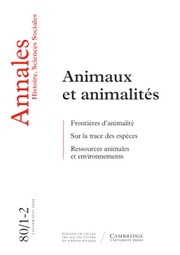Article contents
Théorie des Jeux et Analyse Historique des Institutions. Les institutions économiques du Moyen Age
Published online by Cambridge University Press: 26 July 2017
Extract
Les institutions interviennent sur l'efficacité d'une économie puisqu'elles modifient la répartition des ressources et les relations d'échange que les agents ont entre eux. De ce fait, pour examiner leur nature et leurs effets, il n'est pas de meilleur moyen que de tirer parti de la diversité des environnements apparus dans l'histoire.
Une première façon d'étudier les institutions hors-marché (non marketinstitutions) qui ont régi l'échange au cours du temps s'inspire de la théorie néo-classique qui les identifient avec les arrangements contractuels validés par le droit et les considèrent comme des substituts du marché. Une seconde — celle de l'histoire économique néo-institutionnaliste (neo-institutionaléconomie history [NIEH]) — les identifient avec les droits de propriété et les règlements qui ordonnent l'échange. Un point commun à ces deux courants est leur insistance sur le rôle de l'État et de son appareil juridique.
Summary
Recent development of game theory has enabled expanding the analysis of historical institutions to examine self-enforcing, non-market institutions. This paper provides a brief methodological discussion of Historical Institutional Analysis that utilizes game theory for the study of such institutions. To illustrate the methodology, contributions, and potential benefit of this approach, the paper briefly discusses recent works applying this methodology to the study of institutions during the late medieval period. Particular attention is given to these studies' implications regarding institutional efficiency and path dependence.
- Type
- L'Historiographie Économique Américaine
- Information
- Copyright
- Copyright © Les Éditions de l’EHESS 1998
References
Références Bibliographiques
- 19
- Cited by


